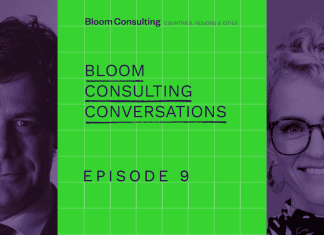1. Lack of global awareness
Imagine, you’re traveling abroad and spark up a conversation with a local. You begin by chatting about where they are from, let’s say Paris. You gush about all the things you’ve ever heard or know about Paris et voilà a conversation about your mutual love for a place. Now, the conversation turns towards you. Where are you from? [insert unknown city, state, or region]. They give you that look; squinted eyes, raised brow, inquisitive tilt of the head. They kindly (or not so kindly) pretend to have an idea and the conversation abruptly comes to an awkward halt. Best case scenario they are open to learning and hearing about this place which is new to them. Worse case, they aren’t. No matter the case, this interaction bodes the question, is this a unique instance or is the general international community truly unaware of where you are from?
Beyond an awkward conversation, you have a much bigger problem. For those who don’t know about your place, it virtually does not exist in their minds. Whether it’s travel, investment, study abroad, or simply having an opinion, your place wouldn’t necessarily be a “bad” option, it just wouldn’t be an option.
Place Branding would put you in the game, building a sense of global awareness and making your place an option for international decision-makers. However, once you’ve entered the big leagues, you sit at a disadvantage behind the players who have a strong Place Brand game plan.
Instead of going with your gut, check your image. With a bit of research and anecdotal experience you’ll have a good idea whether your place lacks global awareness. With no image, there’s no brand. This is a sign you need a Place Brand strategy.
2. Misalignment between brand audience emotion and the Central Idea
Innovative, creative, daring. Do you identify with these descriptors for your country, region or city? If you answered yes, you’re not alone. Being innovative, creative, and daring are positive characteristics of a place but they’re not what make you unique. Brand audiences will remember a feeling, an emotion they associate with a place and its people. The Central Idea is the driver behind building lasting perceptions. Accurately representing a place and its people, the Central Idea derives from an intentional truth.
Globalization has leveled the playing field in attracting foreign direct investment, tourism, and talent from far and wide. We now face a greater pool of targets, bringing with it a greater pool of possibilities. With global awareness putting you in the game, building positive emotional reasoning in the minds of brand audiences will enhance your competitiveness.
What’s their top of mind thought when asked about your [country]? Do they remember [negative event] or do they get excited about the [upcoming inherently positive event]? If the majority of mentions relate to an off-brand subject in terms of deviation from the Central Idea and lack positive emotional reasoning this is a sign you need a Place Brand strategy.
3. Lack of stakeholder unity or shared vision
Three friends were sitting around a table, a Hotel Manager, a Dean of Students, and the Minister of Investment. The Hotel Manager says, “I wish our country would focus on tourism the way it does talent and foreign direct investment.” The Dean of Students says, “It would make foreign student attraction much easier, as it seems they only study abroad in places they know or would like to visit.” The Minister of Investment nods in agreement, “Indeed, if more tourists actually came, we’d invest in the infrastructure which would have an exponential return.”
Whether the joke is funny or not is less the point we’re trying to make. One of the beauties of Place Branding is the coming together of a country, recognizing the need for collaboration to move forward with national intention and achieve global impact.
Building perceptions is less focused on the business objective itself, rather unifying stakeholders to collectively represent their place as a single unit with transactional value gain as a subsequent result. Too often, public and private institutions work in silos without effective communication. If there appears to be a lack of stakeholder unity or shared vision for the future of who you are and what you stand for, this is a sign you need a Place Brand strategy.
4. Image-identity gap
Misperceptions often mean that your place is seen worse than it actually is. These misperceptions can occur both locally and externally.
Perceptions are complicated, thus there are a few avenues where things can get fuzzy. First, local (domestic) perceptions are vital to understanding the real situation. In most cases, people living on-site have the most accurate impression.
Second, external (international) perceptions are necessary to be competitive in the globalized marketplace. It’s important for others understand what you have, who are you, and the why behind your existence. Going back to lack of global awareness, once you’re in the game, you need to bring your best hitter to the plate, showing off your potential, skills, and achievements.
How you see yourself.
The way you are.
How others see you.
Now, find out whether the three are aligned and determine whether it’s a local or external perception issue. Marketers need something to market. The objective of a strong, resilient Place Brand would be the creation of a place which reflects the essence of its people and their shared vision. If your place is only scratching the surface of its potential and is caught in the trap of repetitive marketing propaganda to visit [here], invest [here] and live [here] this is a sign you need a Place Brand strategy.
5. Your go-to “Place Branding Organization” is working in a silo, or worse, doesn’t exist
When you think of Place Branding and who in particular is spearheading this venture in your country, region or city, who comes to mind? Visit [here], Invest [here], Live [here]? These organizations are key players, but it’s important to verify that their objectives see beyond their dimension (visit, invest, live).
While drawing in visitors, investment, and foreign talent are undoubtedly strong economic activities, they do not individually substantiate the holistic potential of a Place Brand. If your go-to place branding organization is working in a silo, or worse, doesn’t exist, the exponential benefits of a comprehensive Place Brand strategy are wasted. This is a sign you need a Place Brand strategy.
Now, where to start?
The 14 Steps to Nation Branding is a good jumping off point. Whether country, region or city, the 14 Steps are applicable with minor tweaks here and there. This practitioner’s guide will nonetheless be a helpful point of reference when developing your Place Brand strategy.
Download here at City Nation Place.
Published on 11.06.2021.













